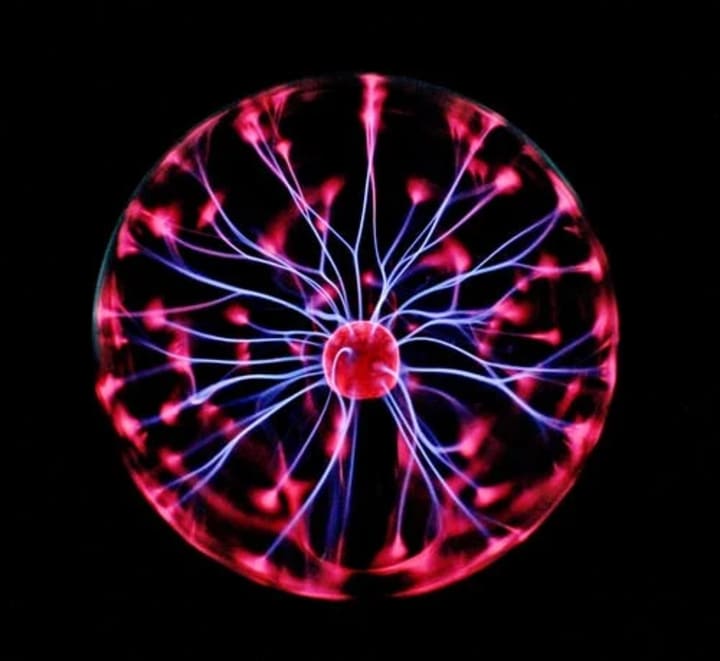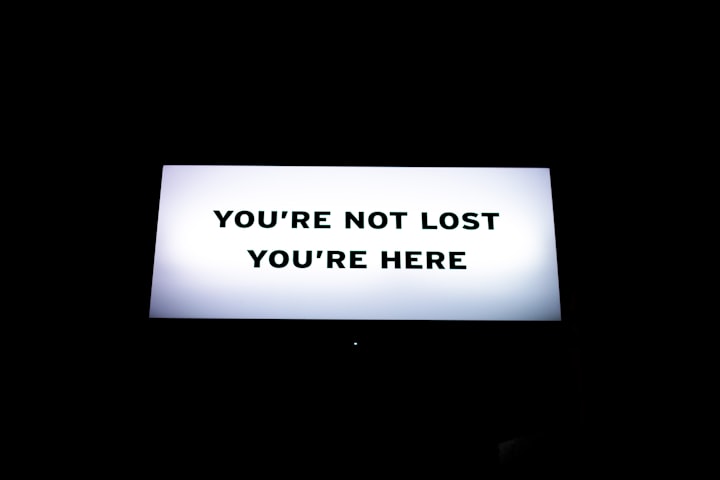The Beginning & End of Humanity | Explained
A short fiction story about a man who finds himself at the beginning and end of everything. This story is entirely fictional. The concept of artificial intelligence, mind uploading, and a future "singularity" is immensely complex, uncertain, and could go any number of ways. This story is not intended to be educational or speculative on those matters, but rather a reflection on the idea of achieving everything those matters seem to be striving towards, and what might come after.

The year is 1968.
A seven-year-old boy, named Clay, has just finished building a contraption that remotely opens and closes a little outside door for his family's dog. He's constantly building toys and mechanical contraptions like this one: Using spare bike parts, old TVs, radios and any other objects that he can get his hands on. 8 years later, the year is 1976. The first personal computers hit the market. Clay, now 15, finds himself immediately drawn to the newly developing industry of computers. He soon begins creating software programs and has a unique way of understanding how technology, and humans, can interact. Throughout his adolescence, because of this interest to understanding and his natural ingenuity, Clay creates and sells several computer software’s, develops a software business, appears on TV about a dozen times, meets the president and graduates from M.I.T. The year is 1982. Clay is 21. Clay loses his mother to coronary heart disease. Having not had a father in the picture, Clay's mother was one of the few people Clay had that he truly loved and could count on his life. Clay struggles with his mother's death the experience and idea of her death, and death in general, makes no sense to him. Clay wonders why a conscious intelligent being, unlike any other species, dies like every other species. How can a species, that can create fire, tools, computers, airplanes, rockets, medicine and so on still die basically the same, as a slug or a lizard? Early on, Clay forms the belief that it doesn't have to be this way. He believes, that in a not so far future, we can overcome the dependence on our weak and entropic biological human body through technology. Clay embarks on his pursuit of this belief. He studies and develops his theories and begins to immerse further and further into newly emerging computer software and biotechnologies.

The year is 1997.
At age 36, Clay starts a biotech company named Kurve, which creates algorithms and computer models related to human biology and genetics. Clay soon discovers that the brain is quite similar to the software’s he's creating and studying the brain with. The brain recognizes patterns, organizes these patterns hierarchically, and is then able to formulate an awareness of its conditions and make judgements accordingly. Just like the newly developing artificially intelligent software’s Clay is working with. In this, Clay realizes that if the coding of human consciousness can be fully modelled and replicated it could also be, theoretically, placed onto device of replicable function and sustained indefinitely. In other words, the human experience of self could essentially be limitless beyond the human body.
32 years later. The year is 2029.
At age 68, Clay and his biotech company successfully reverse engineered the entire function of the human brain. This, in combination with a vast array of other innovations in the biotechnology space, now means that human consciousness can be enhanced, maintained and transferred through and onto any hardware device or cloud service entity. People now have the opportunity to think and understand at a rate that is exponentially greater than any conceived possibility of the past. Mental conditions are now able to be modified beyond inherited genetics. Lifelong mental disorders can be eradicated. Bacterial and age-related diseases can be circumvented. 8 years later.
Clay is now 76. The year is 2037.
Clay is the first person to successfully upload his entire brain function to an outside hybrid entity. Now, at any point, Clay can change over to a separate synthetic body and reconnect to his consciousness via a software access server, like the Cloud, and still remain with his sense of self. With this Clay would lead humanity into a new realm of existence. A life of boundless consciousness.
The year is 2486.
Clay, along with the rest of humanity lives hundreds of years past their previously standard life expectancy. Clay travels the whole world and visits every place there is to see. He reads every book. Sees every movie. Watches every video. Visits every website, masters every language, hears every story and learns every skill. He falls into love and out of love, over and over. Hundreds of years turn to thousands, thousands turn to millions. The year becomes irrelevant. Every time boredom, overpopulation, overconsumption and so on appear to be on the horizon. New worlds are discovered and created. Clay explores, new planets, new galaxies, new dimensions. He meets new beings from other worlds. New realms of art, science and entertainment emerge and die.
Emerge and die.
He experiences new types of feelings, new ways of thinking, new ways of experiencing. Millions and millions more years go by. Clay's home, his mother, his sister, his dog, his childhood, his mortal self, the conditions of the worlds he was born in have all long been forgotten. Stored away, like an old file, on an old hardrive he forgot he ever had. Clay continues on for millions of years. He explores more worlds and more realms of life... On and on.
Until, eventually, the stars begin to die, the galaxies begin to dissolve and the universe begins to burn out. Clay accomplish what had been but a fantasy for all of human history before him, a supremacy over one's nature, an immortality. He travelled the cosmos, he made millions and millions of discoveries, learned everything there was to know: every law of physics, every rule of reality, all to end up here, about to die, with everything else.
"What was it all for?" Clay wonders to himself. What was the point of beating his own death, just to be subjected to the death of the universe? How could a species that transcended its own biology and the nature of life itself, just to die off with the universe, like all the little particles and amoebas that came before it? In the remaining moments of this smothering universe, Clay decides to create one last thing. Now, having learned all the mechanics of nature and how the universe works, Clay begins to construct a blueprint for a new one. Like creating the rules of a videogame: he renders the code for a new universe. He makes it hard but not impossible. Long but not without end. He makes it so that each level gets a little more complex, yet a little more interesting. A little more daunting yet a little more rewarding. He makes so the rules of the universe change a little overtime, never too far so it makes no sense, but never too close that it makes complete sense. He hides the endgame so far from the starting point, only in the final stage can it be seen and comprehended. He conceals the truth amidst the chaos, the logic amidst the disorder, the meaning amidst the lack thereof.
Finally, he leaves the possibility for creating anew. Clay finishes. "It's perfect." he says to himself. The universe begins to compress tighter and tighter; the dying energy dries out any remaining life, the last stars turn off, the last planets explode. Everything gives one last node a farewell, to this existence, as it squeezes back into nothingness. As the energy tightens into a final pinpoint, Clay's new universe explodes. A bursting of color, matter and energy floods out, reversing the nothing into an ever expanding everything. Time and space begin again. Stars fill the sky. Celestial collisions occur. Planets Form. Bacteria and amoebas flow around each other. Life emerges and the trial and error of existence unfolds. A sequence of living and dying, trying and failing, evolving and adapting, thinking and talking, building and creating. Years, and years, and years would go by.

The year......is 1968.
A seven-year-old boy named Clay has just finished building a contraption that remotely opens and closes a little outside door for his family's dog. He's constantly building toys and mechanical contraptions like this one Using spare bike parts, old TVs, radios and any other objects that he can get his hands on. He'll probably do a lot in this life. As clay finishes the dog’s door, his sister asks him:
"Didn't you already make that?"
"Yeah. I just took it apart and made it again", replies Clay.
"Why?", asks his sister.
"I don't know. It was fun and i wanted to see if i could make it better", replies Clay.
"Well, is it better now?", asks his sister.
Clay replies: "No. It was fine".
About the Creator
محمد عدي
A poet by chance, and an affiliate marketer by choice.
If you want to start making passive money online then go straight here. Your Free Training.
This will allow you to set yourself up for success & working towards financial freedom.






Comments
There are no comments for this story
Be the first to respond and start the conversation.